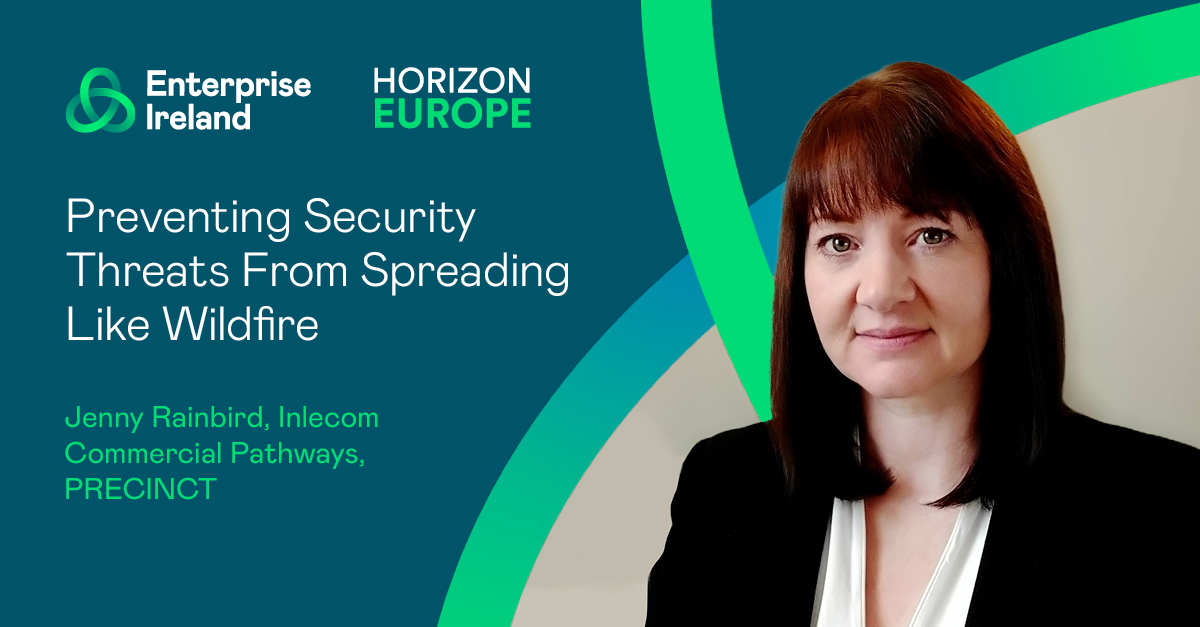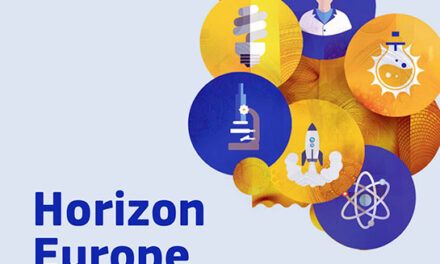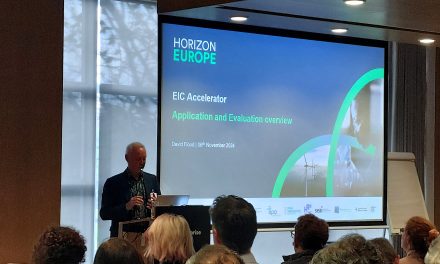From airports, ports and railways to hospitals, waterworks, energy pipelines and power plants, not to mention broadband, telecoms and other vital systems – critical infrastructure is crucial to modern life. No matter what, we need these facilities and systems to stay up and running, which means they must be prepared and resilient if they come under attack or fall victim to natural hazards.
“Cyber-attacks and physical attacks are real – they do happen,” explains Jenny Rainbird, Head of EU Project Delivery at Inlecom Commercial Pathways. The firm is project managing PRECINCT, a €9.5m project funded by the EU Horizon 2020 programme, which aims to strengthen critical infrastructure resilience in the region.
“How we protect our infrastructure is vital,” she says. “People often don’t appreciate that in our modern societies, data is linked. The data from the airport is linked to other transport systems. Waterworks and flooding data is linked to response centres and roads systems.
“As we see smart cities on the rise, data and systems are becoming increasingly integrated, so the potential cascading effects when things go wrong is something we are trying to address.”
She adds that criminals and terrorists are well aware of how to harness that cascading effect to cause maximum damage. “We are seeing co-ordinated cyber-attacks happening across borders and neighbouring regions. It really brings the interconnectivity of information flows in the modern world into clear focus.”
Uniting to boost European security
That’s why PRECINCT is harnessing AI, automation and cross-sectoral expertise to develop a common security management approach across multiple EU member states. It seeks to protect the complex web of critical infrastructures across the region, especially around vulnerabilities arising from interdependencies and cascading effects.
Part of a wider ecosystem of EU-funded projects – the European Cluster for Securing Critical Infrastructures (ECSCI) – PRECINCT ultimately aims to improve both physical and data security. “We are bringing together people from all over Europe to make a more secure society for everyone,” says Rainbird.
Of the overall funding, €1.6m has gone to the five Irish partners that are among the 40-strong PRECINCT group. They are Inlecom, Konnecta, Research Driven Solutions, Dún Laoghaire-Rathdown County Council and UCD.
Other partners across the EU include critical infrastructure operators, first responders, national authorities, research organisations, relevant European organisations such as the Confederation of Organisations in Road Transport Enforcement (CORTE), technical SMEs and large industry technology providers.
“It’s quite unique and quite ambitious in terms of its scope,” explains Rainbird, who adds that managing such a sprawling project team has its challenges.
“We must manage different cultures and organisations, and see that people can interpret things in different ways,” she says. “Recognising the complexity we were facing, we pulled together a core design team made up of the key technology partners so we could make sure we could describe all the project elements in a robust architecture that everyone could understand.”
From early stages to ready-to-use tools
Having started in October 2021, PRECINCT is still in the early stages of development, with those involved building the project architecture and pulling together relevant research and assets needed for the project.
It will then take a living lab approach, which will use digital twins and model the critical infrastructure interdependencies and protection models for Athens, Antwerp, Bologna and Ljubljana, based on a generic use case being devised by a core design team. PRECINCT will also conduct serious game exercises, in which project partners will play out different scenarios, understand where potential problems could arise and trial various solutions.
“With these living labs, we are making sure that what we are developing is transferable,” explains Rainbird. “We need to be able to package the methodology, the approach and the tools and give them in a ready-to-use form to a local authority or municipality that was not involved developing the specifications and requirements.”
Find the right partners and consider the ask
For research organisations or others interested in applying for Horizon funding, Rainbird emphasises that partnership is vital. “It’s a competitive process so you need to know the expertise you have to offer and preferably partner with someone who has done it before.”
Potential applicants should also step back and appraise the context of any funding calls, she says. “I wouldn’t advise anyone to download the guidelines and go off to apply. Try to understand the drivers behind why that call is there. What is the strategic objective the call is trying to achieve? Why is research needed in that area? What has been done before? You need that deeper understanding and then bring to the call the expertise you are offering.”
Seek support from Enterprise Ireland
Inlecom points to the support of Enterprise Ireland as pivotal to PRECINCT’s success in achieving funding. This support included proactive guidance during the PRECINCT concept and proposal preparation phases, help with onboarding key partners in the consortium, and a comprehensive review of the project proposal before it was submitted to the European Commission.
If you would like advice about accessing Horizon Europe support or further details, please contact horizonsupport@enterprise-ireland.com or visit www.horizoneurope.ie





